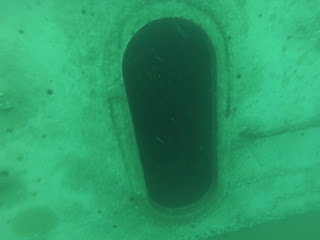You can scuba dive in virtually any
type of sea conditions, if provided training and safety. Since wreck
diving ( wich i covered previously ), to drift diving, deep diving,
altitude diving ( such as lakes in mountains ), cavern diving - among
a few others - one important requirement for them is day light, or
sight of day light. But marine life doesn´t stop at night, fish
actually kind of work by shifts – diurnal, crepuscular, and
nocturnal – so divers would miss out on alot of underwater action.
Thus, the night dive was invented. Most of the divers who start
diving at night will probably do it for the challenge, some for
curiosity, and others by advice of it´s instructor. But no matter
the motive, one can expect a different experience :
- to our senses, it feels like floating in space, and our attention becomes focalized in what the light beam illuminates, with colors and life popping out better than daytime;
- the underwater life changes significantly at night, from coral reefs - static reefs during daytime come alive, with tendrils and feed tubes, to fish that change behaviour or come out only at night ( most diurnal fish become lethargic, and sleep, nocturnal fish come out to hunt );
 |
| Nocturnal fish usually dont swim as fast as diurnal fish, tend to be more solitary and shy, and during the day are found hiding in caves or under overhangs. They also tend to be carnivores ( Diurnal fish are often herbivores or omnivores ). |
It also can
provide some good opportunities for some amazing underwater photos
and videos, as there is no intrusive natural light in the shots –
the subject is illuminated by the divers light setup. Heres an example of this :
One can try night diving by doing
the adventure diver course, after the open water course. Later, the diver
can take the correspondent specialty course. With the help of an
instructor, a diver learns about the required equipment, how to
function with primary and backup lights, navigate under low
visibility, how to communicate via light and hand signals, and how to
handle general skills in darkness.
Besides wreck diving, this is also
one of my favorite type of dives. I think its both rewarding, and
relaxating, and i highly recommend to try it – 10 out of 10.
Dont fear the darkness, embrace it.
:)
Atlantic Diver










